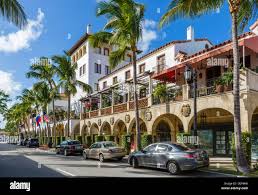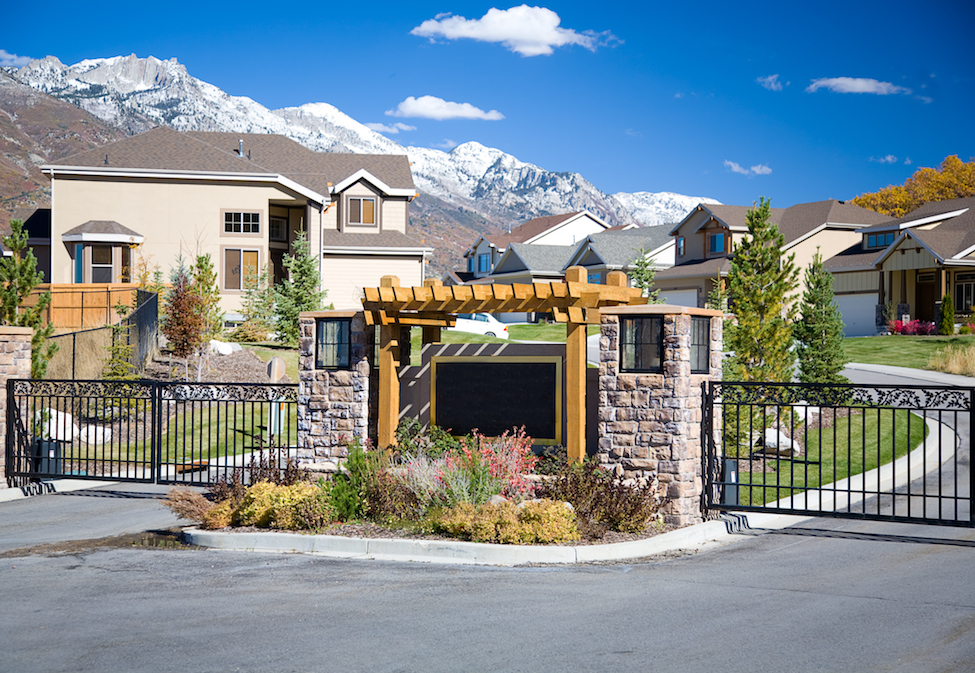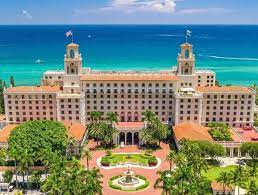BY-BYE BOCA
PART 3:
HOW THE VERY WEALTHY HANDLE DENSE REAL ESTATE DEVELOPMENT WHERE THEY LIVE
HINT: THEY DON’T ALLOW It
The Town of Palm Beach Has Resisted and Prevented Development Because It Listens to its Residents
“There are people who have money and people who are rich.”
―Coco Chanel
For the wealthy residents of the Town of Palm Beach, and not to be confused with West Palm Beach over the bridges, the Town of Palm Beach is a place of respite, calm, pink homes on manicured properties. There are rarely sounds of jackhammers or large cranes hoisting materials. Those construction sounds do not echo around the Island.
The Town of Palm Beach has strict ordinances and zoning laws about new commercial, office, and residential development. The tallest buildings on Palm Beach Island are an eight-story office building on Royal Palm and the eight-story Breakers Hotel. The town also does not have gated communities and zero-lot line properties, two standard real estate features typical in other cities throughout South Florida.
Maybe this is because Palm Beach is a town, not a city. A town is a populated area with fixed boundaries and a local government. A city is a large or important town. The state also makes the distinction between city and town. One characteristic of a town is its population density and height restrictions on its commercial and residential properties.
Towns also have a more direct form of city government that can have a close relationship between citizens and the city council.
Regarding maximum heights, Palm Beach has a few six-story residential buildings on South Ocean Boulevard facing the ocean. The quaintness of Worth Avenue, the town’s luxury shopping street, maintains its special Palm Beach aura because the buildings are mainly two stories tall and adhere to the town’s original Mediterranean Revival and Spanish Colonial Revival style architectural vision of Addison Meizner. 
The town (pre-Trump Mar-a-Lago) was noted for its understated elegance. In 1896, the industrialist Henry Flagler built the predecessor of the Breakers Hotel, The Royal Poinciana. It originally was a wooden structure six stories tall. After a few renovations, the Poinciana was renamed “The Breakers” in 1901. Today, the Breakers are only eight stories tall.
If building structures that reach for the sky is not a goal in the Town of Palm Beach, the city has other distinctions. Of course, the most obvious is home prices. The price of an average Palm Beach home is $2,017,803 as of 2021, according to Zillow. The typical home value of homes in Boca Raton is $566,680. In Florida, a person can defined by where they live: a gated golf country club, close or far from the Intracoastal or ocean, or west of the Turnpike.
Its quiet, private, and secluded design has made Palm Beach the home to many very wealthy people. Together, the top 10 richest billionaires who have ties or live in Palm Beach are worth about $140 billion, according to Forbes’ estimates. This group includes New England Patriot’s owner Robert Kraft; Abigail Johnson, CEO of Fidelity Investments; hedge fund CEO Kenneth Griffin of Citadel; businessman Thomas Peterffy; Carl Icahn, investor and founder of Icahn Enterprises; Julia Koch, widow of David Koch; and Blackstone Group CEO Stephen Schwarzman.
Oddly, while some Palm Beach residents know the benefits of predatory capitalism (private equity, hedge funds, real estate development), they don’t allow the real estate developers to ply their trade within their own town.
While Palm Beach may prevent large-scale development, it doesn’t mean they object to all building changes. Several private and exclusive (at least judging from the membership fees) are in the works to socialize with others in their class. This includes a private club in the old Chesterfield Hotel and a new club on South Country Road off Royal Palm Boulevard. This club carries an initiation fee of between $200,000 to $250,000.
Club Colette carries an initiation fee of between $20,000 and $30,000 for private dining. The Everglades Club has an initiation/Equity Cost of $100,000-plus. Mar-a-Lago has a $250,000 initiation fee. Plus, there are pricey facilities at the Palm Beach Country Club, the Beach Club, and the Everglades.
So, is development and congestion a characteristic of South Florida? Not at all.
The Town of Palm Beach is an exceptional example of how city officials, with the backing of its citizens, insisted on keeping the town’s original character intact. While Palm Beach is a small town (population: 9,200 as of 2021) and is 8.12 square miles compared to Boca Raton (29 square miles), Boynton Beach (16 square miles), and Delray (16 square miles), the key may be that Palm Beach listens to its residents who, if history is any indication, have insisted that the town should not become more developed and congested.
Notably, the town has never allowed overdevelopment, and it has no gated communities.
The Problem With Gated Communities
Gated communities have been around in the U.S. since about 1870 when private streets were built in St. Louis. However, they began to attract the attention of academics in the mid-1990s as interest increased in social fragmentation and new types of voluntary segregation. Today, the states with the most gated communities are California, Florida, Arizona, and Texas.
This became fertile ground for academic studies and popular critiques. The early themes of this work took on the warning of social fragmentation, urban segregation, and the emergence of a new type of civic arrangement. Gated communities became symbols and symptoms of a line that was being crossed from one based on a popular, democratic political base to one defined by a market-driven civic society, authors Renaud Le Goix and Chris J. Webster wrote in a paper, “Gated Communities.”

But as people created these secure, homogeneous enclaves, it also raised questions about the meaning of the future of citizenship and the concept of community in America. It raised the question of whether people living in gated communities voluntarily isolated themselves from the racially and economically mixed, open society that is the foundation of American democracy. In most cases, professionals managed gated communities, so residents gave up their social contract to act as neighbors in exchange for professional management. The communities were also regulated by HOAs and covenants, conditions, and rules (CC&R) that the land developers often established.
In the book Fortress America: Gated Communities in the United States (Brookings Institution Press, 1997), authors Edward J. Blakely and Mary Gail Snyder conducted the first study of gated communities and their social impact. In the book, they presented issues related to private versus public rights. They concluded that gated communities are “a dramatic manifestation of a new fortress mentality growing in America.” The authors presented some provocative ideas, such as whether residents of the gated community isolated themselves from the surrounding community.
What Created Gated Communities
The history of gated communities parallels the rise of the middle and upper classes as they sought exclusivity, privacy, and security. In the article “Gated Communities and Residential Property Values,” Appraisal Journal, April 1, 2001, by Douglas S. Bible and Chengho Hsieh, the authors found that fenced communities with gates were first developed for the upper class during the early decades of the 1900s, primarily on the East Coast and in Hollywood. In the 1950s and 1960s, gated entries became common for retirement developments. Gated communities grew more popular during the 1980s and 1990s.
Yet, while many articles and papers addressed the benefits of gated communities, there were few studies about how property values were impacted by living in one of these developments.
To gauge the impact of restricted access in gated communities on property values, Blakely and Snyder visited gated communities across the United States to interview residents and surveyed more than 400 homeowner associations’ boards in gated communities in Florida and California. Their field research in 1994 and 1995 describes three kinds of “fortified American neighborhoods, distinguished by the residents’ motivations in limiting public access.”
In the first group, what the authors called “lifestyle communities,” gates were found to provide security and enclose leisure activities and amenities, such as golf and tennis. The second group, “elite communities,” uses gates to symbolize distinction, exclusivity, and prestige to show a secure place on the social ladder. The third type of gated community is called the “security zone, where the fear of crime and outsiders is the foremost motivation for defensive fortifications.”
The researchers noted that “while life may be more comfortable for residents inside the gates than for those outside, gated communities symbolize a larger social pattern of segmentation and separation designed to disassociate and exclude.” They also found that while long-term crime rates are not affected by the installation of gates and fences, residents feel safer, especially when their children play outside.
The “Fortress America” theory suggests that gated communities “encourage economic segregation and are themselves a microcosm of the larger spatial pattern of segmentation and separation.”
They argued that the privatization of public services–such as when gated communities provide their police protection–tends to defeat the very idea of democracy. Furthermore, they find no evidence that gated communities foster community spirit even within their confines.”
Gated communities are common in South Florida. Towns like Palm Beach and other wealthy, more isolated towns have resisted over-development, kept their original town integrity, and preserved their small-town atmosphere. Prominent developers, intent on maximizing profit, have no respect for these values.
The Successful Formula of Palm Beach
Cities with larger populations than the Town of Palm Beach can keep their original city character if they have a civic tradition, responsive and ethical government, stewardship of their town’s vision, and respect for its citizen’s wishes.
Unfortunately, many cities and towns south of Palm Beach—including West Palm Beach, Boynton Beach, Boca Raton, Pompano Beach, and Miami–have forgotten that message. Instead, the city councils of many of those towns have become working partners of the developers at the expense of their residents.
Maybe the wealthy have more money than others, but they also may be more intelligent when preserving the neighborhoods where they live.











